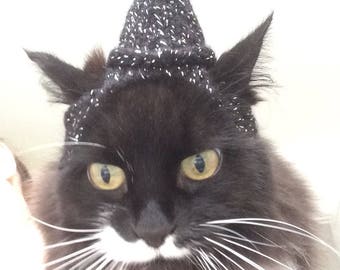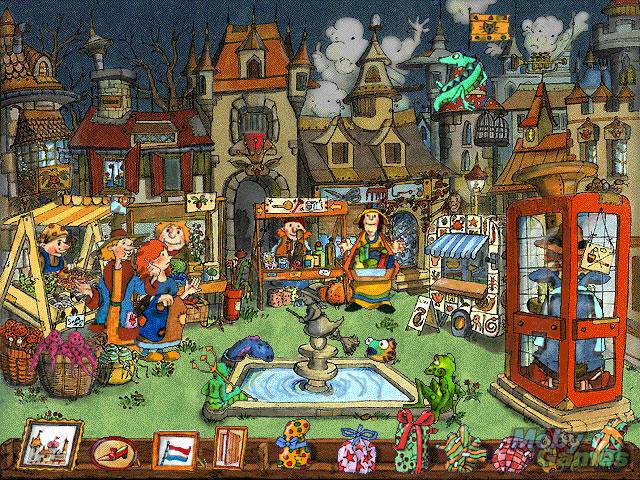Black Cats And Pointed Hats
Oct 16, 2013 Flowing black robes. Who as early as the 1500s used pointed hats to subtly evoke devil horns. Slate is published by The Slate Group.
'Speurtocht in heksenstad' -- Dutch title 'Hexentanz und Firlefanz' -- German title 'Abracadabra la. Last week we talked about the general origins of Halloween, the pumpkin carving and trick-or-treating. Today we are taking on pointy hats and black cats.
It’s that time of year again! The temps are dropping.
You can’t throw a rock without hitting a pumpkin flavored something. And all the stores are full of black cats and pointy witch hats. Have you ever wondering how those traditions came to be? We’ll we thought it would be fun to find out, or at least try. Last week we talked about the general origins of Halloween, the pumpkin carving and trick-or-treating. Today we are taking on pointy hats and black cats. Witch hats are everywhere right now.
Big, small and even some adorable tiny ones on headbands, but they all have one thing in common. They are pointy. The short answer is no one really knows. Don’t you hate those answers?
Sorcerers have long been depicted as wearing conical shaped hats. Yes long before Mickey worn one in the Sorcerer’s Apprentice, but although there are plenty of depictions of female witches during the middle ages, none of them are shown wearing pointy hats. One theory goes that they were in fashion at one point during the middle ages.
As goes with fashion they were long out of style by the time the peasants started wearing them. This corresponded with the time of the witch trials and may have caused the association. All we really know is that in the early 18th century, children’s’ writers began depicting witches as ugly, old women in pointy black hats.
These stories, such as Hansel and Gretel became immensely popular and the rest is history. The black cat superstitions on the other paw (see what we did there? LOL) are a little easier to understand. Cats are basically nocturnal.


In medieval times there weren’t any streetlights. Therefore a black cat coming out of nowhere and crossing your path with those reflective green eyes would probably scare the bejeepers out of anyone! Given the difficult living conditions of that time, many poor folks, including elderly women were homeless and living on the streets of the cities. They would care for these stray cats. These women were often accused of witchcraft, linking black cats and witches forever. Black cats haven’t always had such a bad reputation.
When sailors would take on a cat to help keep the rats away on the ship, choosing a black cat was considered good luck. Sailors’ wives also believe that having a black cat around the house would give their husbands smooth waters and bring them home safely. The Japanese believed that black cats were lucky, and the Scottish thought a strange black cat showing up at your door would bring prosperity.
Then of course, there is ancient Egypt where due to the worship of the Goddess Bast, cats were revered, and killing one was punishable by death. Regardless, though, the superstition still persists, and the real tragedy is that black cats are significantly less likely to be adopted than most other colors. This leaves many looking for a home. So, this Halloween, wear your pointy witches hat with pride (although we aren’t really sure why) and the next time you decide to adopt a cat, consider a black one.
Do you have a black cat that is a beloved member of your family? Show them to us!! Post to our Facebook wall, or tag us on Instagram (@taffordscrubs) or Twitter (@tafford).
And don’t forget to check out all of our fun and spooky Halloween themed scrubs here Don’t forget to check out all of our fun and spooky Halloween themed scrubs!
The hat makes the witch, to. And yet the story of this particular hat—where it originated, and how it took on its demonic resonance—is a murky one. That’s largely because history is full of pointy hats, from the tapering favored by medieval noblewomen to the adopted by French revolutionaries (and Smurfs). There are simply to describe in a single blog post, more possible antecedents than can be ruled out. But weirdly, one of the earliest incarnations of the conical headpiece is also one of the most familiar: PDF—known as the “witches of Subeshi”—are famous for covering their hair with large funnel-shaped contraptions of black felt. They look like aunts in a fourth century B.C. Outtake from Sabrina the Teenage Witch.
Black Cats And Pointed Hats Game
Experts aren’t sure exactly when pointed lids became associated with sorcery. Medieval depictions of witches often show them nude and bare-headed, their long hair mingling with flames and smoke. Woodcuts from the 1600s occasionally outfitted spell-casters in common bonnets. It wasn’t until the 1710s and 1720s that children’s chapbooks in England began illustrating supernatural tales with crones in peaked hats. Fueled by the popularity of these “penny merriments,” the stereotype caught on quickly.
Western European artists began to modify images of witches from the Middle Ages, lengthening the blunt tips of their caps into devilish spikes. According to Gary Jensen, a former professor at Vanderbilt and author of, the pointed cap became an easy, evocative way to signal dark magic. Witches in peaked hats started to appear on postcards from the American colonies. Legendary figures like and —an Italian mother deranged by the death of her infant, said to fly through the night air delivering gifts to children—acquired pointy hats.
During the Salem Witch Trials, witnesses reported seeing the devil: “a large black man with a.” Later, further developed the theme. The two explanations that seem most plausible have to do with real-life marginalized groups.
In his book, Jensen describes how the 1215 required all Jews to identify themselves by wearing the Judenhat (“Jewish hat” or “horned skullcap”). The style soon became a target for Anti-Semitism. Artists painted devils muttering curses beneath Jewish crowns.
In 1431, Hungarian legal codes required first-time sorcery offenders.” were nothing new, and by the late 13 th century, Jewish attributes had soaked up enough ugly significance to tar all “unbelievers, hypocrites, heretics, pagans, and demons,” Jensen writes. So does the Wicked Witch of the West’s reflect an ancient association between black magic and the Chosen People? A second theory holds that the pairing of witches and peaked hats flows from anti-Quaker prejudice. A minority sect in colonial America, the Quakers were thought to consort with devils and dabble in witchcraft. Puritan backlash against the community was cresting in the mid-18 th century, at around the same time that the figure of the cone-headed spell-weaver began to insinuate herself into American folklore.
There’s just one problem with this hypothesis: Quakers didn’t wear pointed hats. But the theory may yet hold water. Quaker headgear was itself the locus of squall and controversy. The movement’s founder, George Fox, famously.
'When the Lord sent me forth into the world He forbade me to put off my hat to any, high or low,” Fox told the magistrates. Because such “hat-honour” was “invented by men in the fall and in the alienation from God.”) Fox endured three separate prison stays for his disrespect; in the colonies, Friends honored his example by keeping their hair covered at all times. In 1876, an American magazine called hailed the Quaker hat as “the war-standard of this quaint army of non-fighters.” Colonial Puritans, though, were not so kind, at times using the hats as an excuse to prosecute their religious rivals.
Jensen suspects that it was a short hop from the Quaker cap as a symbol of doctrinal insubordination to the witch’s hat as an emblem of infernal craft.